Qinghe Du
Unfolded Deep Graph Learning for Networked Over-the-Air Computation
May 16, 2025Abstract:Over-the-air computation (AirComp) has emerged as a promising technology that enables simultaneous transmission and computation through wireless channels. In this paper, we investigate the networked AirComp in multiple clusters allowing diversified data computation, which is yet challenged by the transceiver coordination and interference management therein. Particularly, we aim to maximize the multi-cluster weighted-sum AirComp rate, where the transmission scalar as well as receive beamforming are jointly investigated while addressing the interference issue. From an optimization perspective, we decompose the formulated problem and adopt the alternating optimization technique with an iterative process to approximate the solution. Then, we reinterpret the iterations through the principle of algorithm unfolding, where the channel condition and mutual interference in the AirComp network constitute an underlying graph. Accordingly, the proposed unfolding architecture learns the weights parameterized by graph neural networks, which is trained through stochastic gradient descent approach. Simulation results show that our proposals outperform the conventional schemes, and the proposed unfolded graph learning substantially alleviates the interference and achieves superior computation performance, with strong and efficient adaptation to the dynamic and scalable networks.
Emergency Communication: OTFS-Based Semantic Transmission with Diffusion Noise Suppression
Apr 10, 2025Abstract:Due to their flexibility and dynamic coverage capabilities, Unmanned Aerial Vehicles (UAVs) have emerged as vital platforms for emergency communication in disaster-stricken areas. However, the complex channel conditions in high-speed mobile scenarios significantly impact the reliability and efficiency of traditional communication systems. This paper presents an intelligent emergency communication framework that integrates Orthogonal Time Frequency Space (OTFS) modulation, semantic communication, and a diffusion-based denoising module to address these challenges. OTFS ensures robust communication under dynamic channel conditions due to its superior anti-fading characteristics and adaptability to rapidly changing environments. Semantic communication further enhances transmission efficiency by focusing on key information extraction and reducing data redundancy. Moreover, a diffusion-based channel denoising module is proposed to leverage the gradual noise reduction process and statistical noise modeling, optimizing the accuracy of semantic information recovery. Experimental results demonstrate that the proposed solution significantly improves link stability and transmission performance in high-mobility UAV scenarios, achieving at least a 3dB SNR gain over existing methods.
Deep Graph Reinforcement Learning for UAV-Enabled Multi-User Secure Communications
Apr 02, 2025



Abstract:While unmanned aerial vehicles (UAVs) with flexible mobility are envisioned to enhance physical layer security in wireless communications, the efficient security design that adapts to such high network dynamics is rather challenging. The conventional approaches extended from optimization perspectives are usually quite involved, especially when jointly considering factors in different scales such as deployment and transmission in UAV-related scenarios. In this paper, we address the UAV-enabled multi-user secure communications by proposing a deep graph reinforcement learning framework. Specifically, we reinterpret the security beamforming as a graph neural network (GNN) learning task, where mutual interference among users is managed through the message-passing mechanism. Then, the UAV deployment is obtained through soft actor-critic reinforcement learning, where the GNN-based security beamforming is exploited to guide the deployment strategy update. Simulation results demonstrate that the proposed approach achieves near-optimal security performance and significantly enhances the efficiency of strategy determination. Moreover, the deep graph reinforcement learning framework offers a scalable solution, adaptable to various network scenarios and configurations, establishing a robust basis for information security in UAV-enabled communications.
Capacity Analysis on OAM-Based Wireless Communications: An Electromagnetic Information Theory Perspective
Dec 16, 2024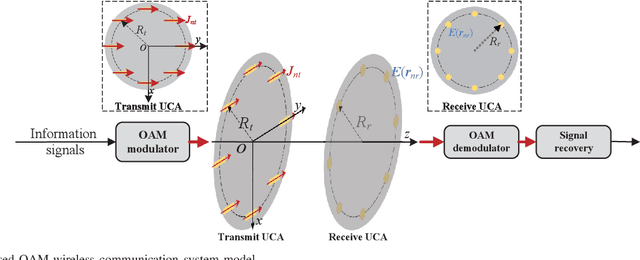
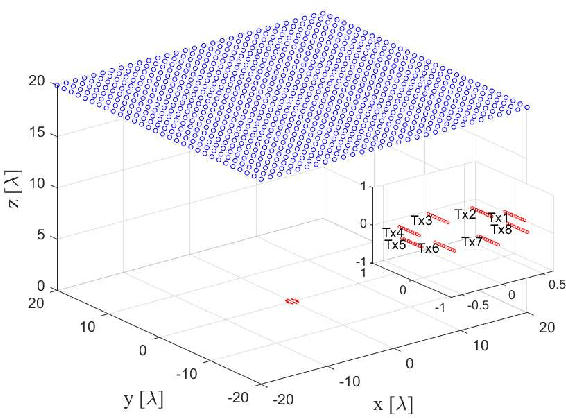
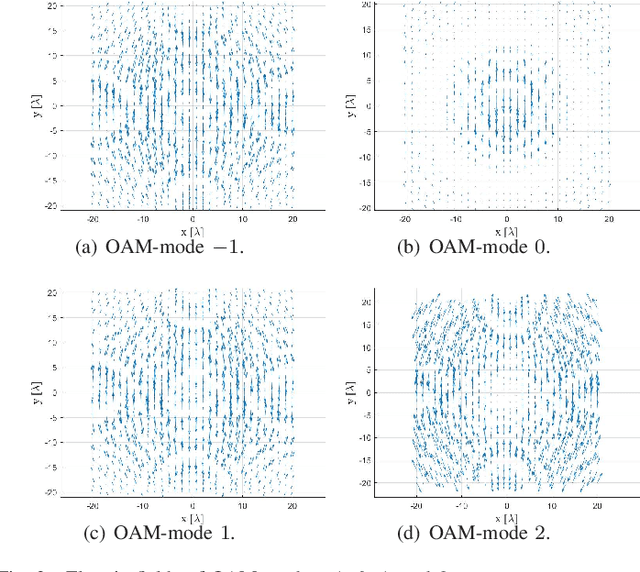
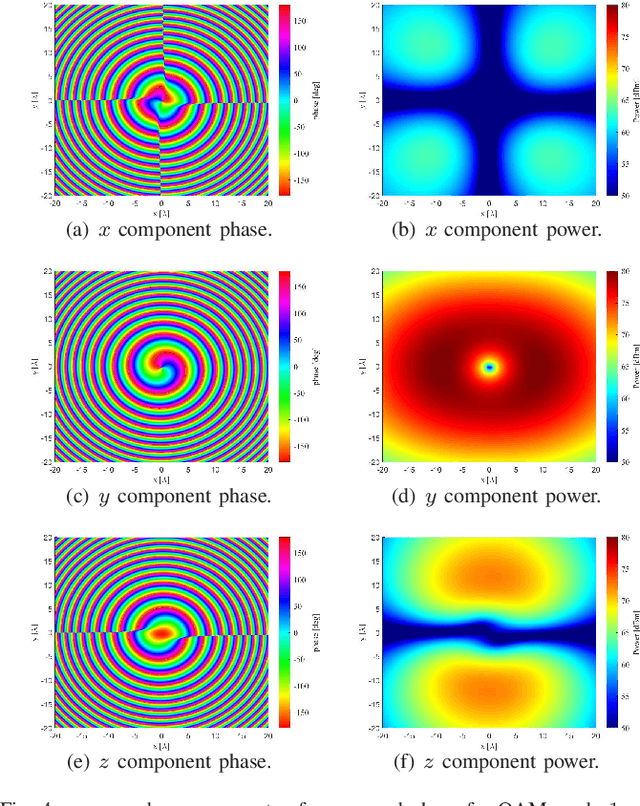
Abstract:Orbital angular momentum (OAM) technology enhances the spectrum and energy efficiency of wireless communications by enabling multiplexing over different OAM modes. However, classical information theory, which relies on scalar models and far-field approximations, cannot fully capture the unique characteristics of OAM-based systems, such as their complex electromagnetic field distributions and near-field behaviors. To address these limitations, this paper analyzes OAM-based wireless communications from an electromagnetic information theory (EIT) perspective, integrating electromagnetic theory with classical information theory. EIT accounts for the physical properties of electromagnetic waves, offering advantages such as improved signal manipulation and better performance in real-world conditions. Given these benefits, EIT is more suitable for analyzing OAM-based wireless communication systems. Presenting a typical OAM model utilizing uniform circular arrays (UCAs), this paper derives the channel capacity based on the induced electric fields by using Green's function. Numerical and simulation results validate the channel capacity enhancement via exploration under EIT framework. Additionally, this paper evaluates the impact of various parameters on the channel capacity. These findings provide new insights for understanding and optimizing OAM-based wireless communications systems.
Deep Learning-Assisted Jamming Mitigation with Movable Antenna Array
Oct 27, 2024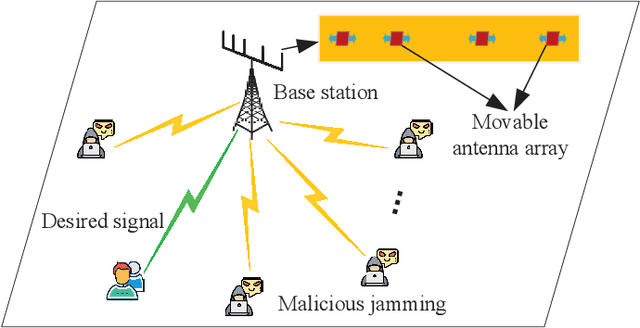

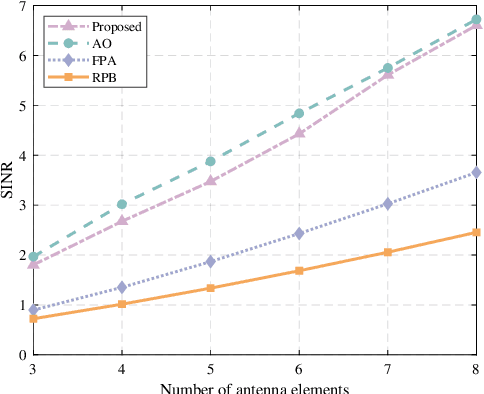
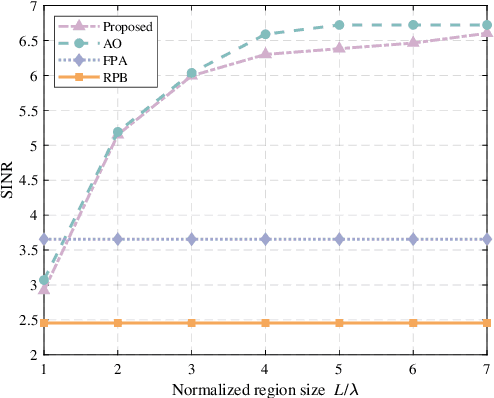
Abstract:This paper reveals the potential of movable antennas in enhancing anti-jamming communication. We consider a legitimate communication link in the presence of multiple jammers and propose deploying a movable antenna array at the receiver to combat jamming attacks. We formulate the problem as a signal-to-interference-plus-noise ratio maximization, by jointly optimizing the receive beamforming and antenna element positioning. Due to the non-convexity and multi-fold difficulties from an optimization perspective, we develop a deep learning-based framework where beamforming is tackled as a Rayleigh quotient problem, while antenna positioning is addressed through multi-layer perceptron training. The neural network parameters are optimized using stochastic gradient descent to achieve effective jamming mitigation strategy, featuring offline training with marginal complexity for online inference. Numerical results demonstrate that the proposed approach achieves near-optimal anti-jamming performance thereby significantly improving the efficiency in strategy determination.
A Two-Dimensional Deep Network for RF-based Drone Detection and Identification Towards Secure Coverage Extension
Aug 26, 2023



Abstract:As drones become increasingly prevalent in human life, they also raises security concerns such as unauthorized access and control, as well as collisions and interference with manned aircraft. Therefore, ensuring the ability to accurately detect and identify between different drones holds significant implications for coverage extension. Assisted by machine learning, radio frequency (RF) detection can recognize the type and flight mode of drones based on the sampled drone signals. In this paper, we first utilize Short-Time Fourier. Transform (STFT) to extract two-dimensional features from the raw signals, which contain both time-domain and frequency-domain information. Then, we employ a Convolutional Neural Network (CNN) built with ResNet structure to achieve multi-class classifications. Our experimental results show that the proposed ResNet-STFT can achieve higher accuracy and faster convergence on the extended dataset. Additionally, it exhibits balanced performance compared to other baselines on the raw dataset.
Statistical Age-of-Information Optimization for Status Update over Multi-State Fading Channels
Mar 20, 2023

Abstract:Age of information (AoI) is a powerful metric to evaluate the freshness of information, where minimization of average statistics, such as the average AoI and average peak AoI, currently prevails in guiding freshness optimization for related applications. Although minimizing the statistics does improve the received information's freshness for status update systems in the sense of average, the time-varying fading characteristics of wireless channels often cause uncertain yet frequent age violations. The recently-proposed statistical AoI metric can better characterize more features of AoI dynamics, which evaluates the achievable minimum peak AoI under the certain constraint on age violation probability. In this paper, we study the statistical AoI minimization problem for status update systems over multi-state fading channels, which can effectively upper-bound the AoI violation probability but introduce the prohibitively-high computing complexity. To resolve this issue, we tackle the problem with a two-fold approach. For a small AoI exponent, the problem is approximated via a fractional programming problem. For a large AoI exponent, the problem is converted to a convex problem. Solving the two problems respectively, we derive the near-optimal sampling interval for diverse status update systems. Insightful observations are obtained on how sampling interval shall be tuned as a decreasing function of channel state information (CSI). Surprisingly, for the extremely stringent AoI requirement, the sampling interval converges to a constant regardless of CSI's variation. Numerical results verify effectiveness as well as superiority of our proposed scheme.
Robust Secrecy via Aerial Reflection and Jamming: Joint Optimization of Deployment and Transmission
Feb 28, 2023



Abstract:Reconfigurable intelligent surfaces (RISs) are recognized with great potential to strengthen wireless security, yet the performance gain largely depends on the deployment location of RISs in the network topology. In this paper, we consider the anti-eavesdropping communication established through a RIS at a fixed location, as well as an aerial platform mounting another RIS and a friendly jammer to further improve the secrecy. The aerial RIS helps enhance the legitimate signal and the aerial cooperative jamming is strengthened through the fixed RIS. The security gain with aerial reflection and jamming is further improved with the optimized deployment of the aerial platform. We particularly consider the imperfect channel state information issue and address the worst-case secrecy for robust performance. The formulated robust secrecy rate maximization problem is decomposed into two layers, where the inner layer solves for reflection and jamming with robust optimization, and the outer layer tackles the aerial deployment through deep reinforcement learning. Simulation results show the deployment under different network topologies and demonstrate the performance superiority of our proposal in terms of the worst-case security provisioning as compared with the baselines.
Online Learning of Trellis Diagram Using Neural Network for Robust Detection and Decoding
Feb 22, 2022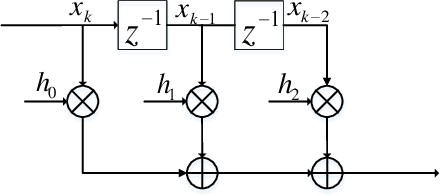
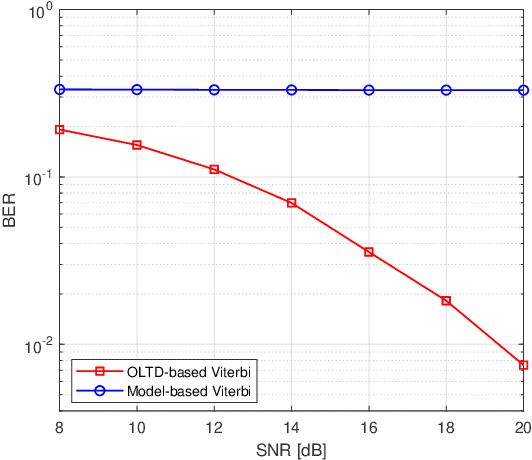
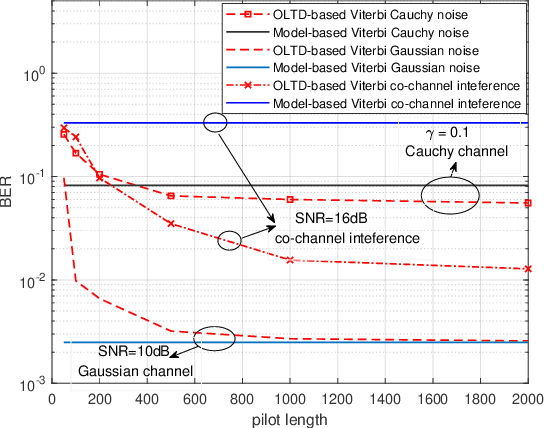
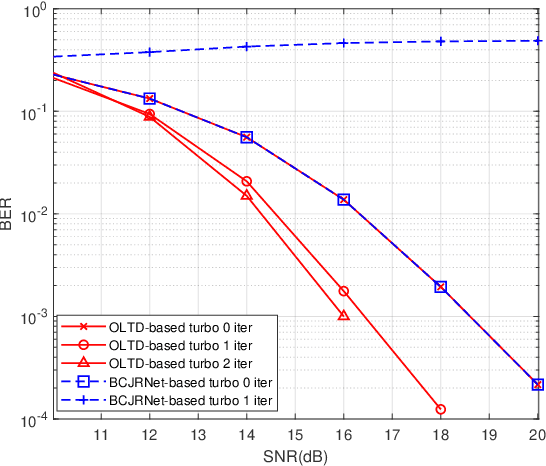
Abstract:This paper studies machine learning-assisted maximum likelihood (ML) and maximum a posteriori (MAP) receivers for a communication system with memory, which can be modelled by a trellis diagram. The prerequisite of the ML/MAP receiver is to obtain the likelihood of the received samples under different state transitions of the trellis diagram, which relies on the channel state information (CSI) and the distribution of the channel noise. We propose to learn the trellis diagram real-time using an artificial neural network (ANN) trained by a pilot sequence. This approach, termed as the online learning of trellis diagram (OLTD), requires neither the CSI nor statistics of the noise, and can be incorporated into the classic Viterbi and the BCJR algorithm. %Compared with the state-of-the-art ViterbiNet and BCJRNet algorithms in the literature, it It is shown to significantly outperform the model-based methods in non-Gaussian channels. It requires much less training overhead than the state-of-the-art methods, and hence is more feasible for real implementations. As an illustrative example, the OLTD-based BCJR is applied to a Bluetooth low energy (BLE) receiver trained only by a 256-sample pilot sequence. Moreover, the OLTD-based BCJR can accommodate for turbo equalization, while the state-of-the-art BCJRNet/ViterbiNet cannot. As an interesting by-product, we propose an enhancement to the BLE standard by introducing a bit interleaver to its physical layer; the resultant improvement of the receiver sensitivity can make it a better fit for some Internet of Things (IoT) communications.
 Add to Chrome
Add to Chrome Add to Firefox
Add to Firefox Add to Edge
Add to Edge